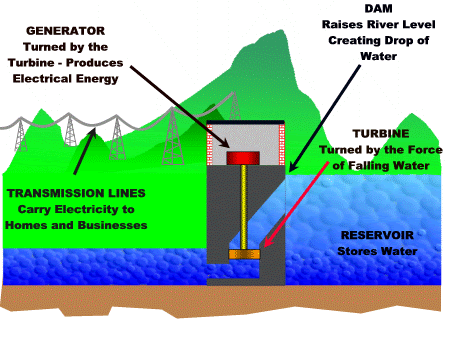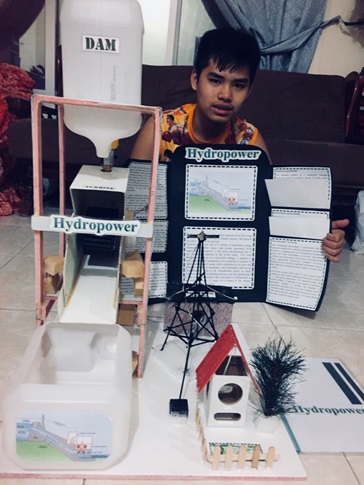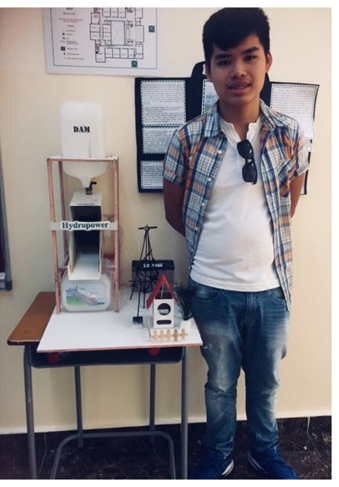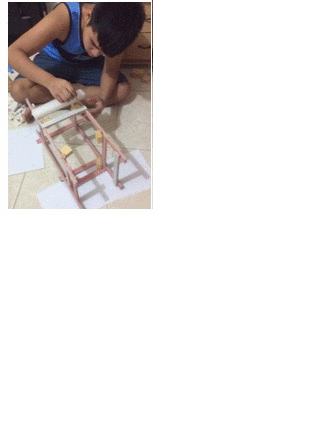HYDROPOWER


The Geological Survey explains that the source of hydropower is mechanical energy. Today, most hydropower comes from a dam that is constructed to create a reservoir of water, and water turbines are built within the dam below the water’s surface. The turbines are driven by the force of the water flowing through them, which, from the subsequent spinning of electromagnets. The rotation of the electromagnets generates a current in stationary wire coils, which runs through a transformer (so to increase the voltage) to be distributed over power lines to consumers. The water that fuels the power of hydroelectric plants is subject to the natural process of the water cycle. The ability of the hydroelectric plant to generate power is determined by the mechanical energy of the water, the flow of the river, and the efficiency of the dam, which can be simplified by the following equation: Power = (Height of Dam) x (River Flow) x (Efficiency). River flows vary and dam heights vary widely, but dam efficiencies tend to range from 60% to 90%, depending on how well hydroelectric facilities are maintained.A plant’s hydroelectric energy from can be calculated by multiplying its output in units power, by units of time: Power x Time = Energy. To figure out how many consumers’ energy needs can be served, one may simple divide the energy output from the plant by the average energy consumption of the hydroelectric plant’s customer: (Plant Energy Output) / (Energy Consumption per Consumer)
Environmental Costs & Benefits Damming flows of water may lead to slow, or even stagnant water bodies, which decreases an ecosystem’s ability to wash away waste (especially human waste). A dammed water flow may also prevent fertile silt from reaching downstream, and impact wildlife and agriculture downstream. Further, fish that swim upstream to spawn may be prevented from doing so, unless proper technology is in place for them to pass without the turbines turning them into sushi (a water “staircase” can be implemented around the sides of the dam). However, negative environmental impact is not limited to downstream; the vegetation engulfed by the dam’s water reservoir decomposes and subsequently emits CO2 and methane (CH4) into the atmosphere, especially in warmer climates.
Conclusion
New developments in hydropower technology accrue less costs, while preserving many of the benefits of traditional hydropower. This is a step in the right direction for hydropower for those who wish to generate power with minimal
What’s it about?
Many of the world’s most powerful machines are driven by the power of water. In the days of our ancestors, falling water was used to drive water wheels to produce power for grinding grain. These days many natural forms of running water, like rivers, are used to drive very large water turbines to form powerful ‘hydroelectric power stations’. In the following science experiment we will build a simple water turbine to explain the principle of how hydroelectric power is generated:
Topics covered
Water turbine, Hydroelectric power, Momentum
What will I need?
Dynamo Motor
(as a generator)
Wood with stand
Glue
LED
Old boxes(power house)
Old wood(house)
Old Christmas tree
Wires
Old bottles
Note: you can make a water tank or flow of water system to rotate the turbine from bottles.
Procedure (Method)
- Fit the entire dynamo motor wheel, as turbine.
- Tight the Generator by metallic strip on glass/wood stand.
- Now fit the turbine in the Generator shaft which is fixed in the glass/ wood stand.
- Connect the generator output terminal wires.
- Now rotate the turbine by hand or fall water by water falling system on the turbine, and
LED lightning. This is the produced electricity. This is hydro power plant system.




 WATCH VIDEO TUTORIAL
WATCH VIDEO TUTORIAL 